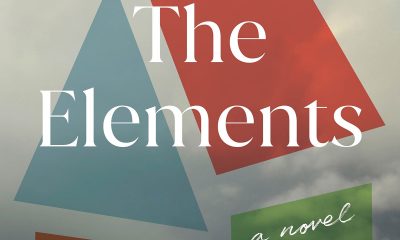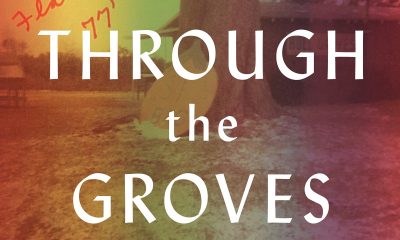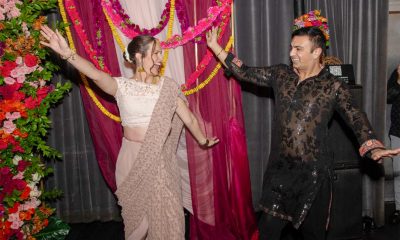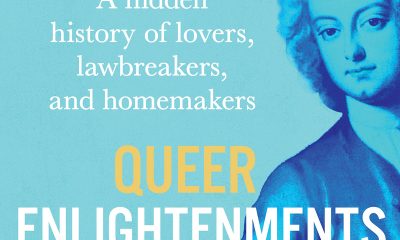Books
BACK TO SCHOOL 2019: New kids’ books spotlight LGBTQ life
‘In My Footprints,’ ‘What Riley Wore’ among standouts
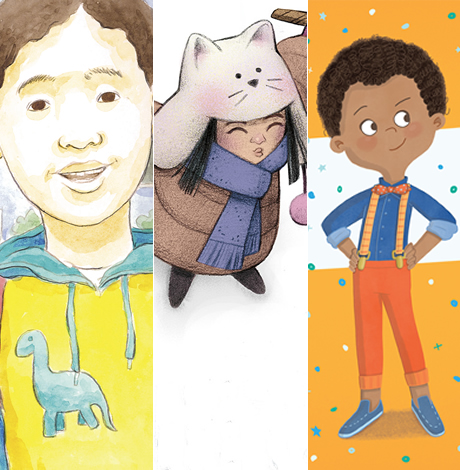
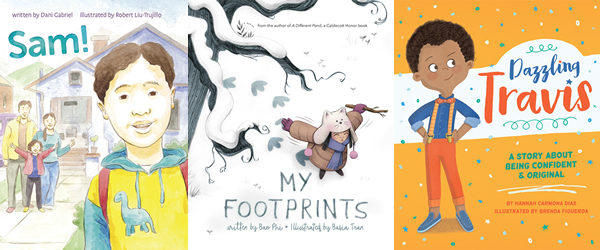
For back-to-school time, here are some new and soon-to-be-published picture books with LGBTQ and gender-creative characters, all involving schools and classmates.
“What Riley Wore,” by Elana K. Arnold and illustrated by Linda Davick (Simon & Schuster), is the winsome tale of a child who delights in playing dress up. On the first day of school, Riley (whose gender is never stated) wears a bunny outfit. Rather than making Riley an object of ridicule, Riley’s soft bunny ears comfort a classmate who was crying. We then see Riley around the neighborhood and at school, switching between a ball gown, a hard hat and overalls, a tutu and more — outfits that elicit praise from other children and Riley’s teacher.
At one point, another child asks, “Are you a girl or a boy?” and Riley simply answers “Today I’m a firefighter. And a dancer,” and several other fanciful things. The other child responds, “Want to play?” Arnold refreshingly conveys a message of acceptance without raising issues of teasing or bullying — important issues, but too often the only narrative told about children expressing gender creativity. The completely positive outlook makes this book stand out.
In “Ogilvy,” by Deborah Underwood (Henry Holt), the titular and gender ambiguous bunny is excited about meeting other children in a new town. Ogilvy’s medium-length garment confuses them, however, and they tell Ogilvy, “Bunnies in dresses play ball and knit socks,” but “Bunnies in sweaters make art and climb rocks.” Underwood smartly doesn’t divide the activities here along traditional gender lines, helping readers see the absurdity of such divisions. Ogilvy relabels the outfit at will and plays accordingly, until one day the other bunnies demand a fixed choice.
Ogilvy finds self-confidence, speaks out and convinces the other bunnies that everyone benefits from wearing and doing what they choose. The rhymes have a clear echo of Dr. Seuss and T. L. McBeth’s simple illustrations evoke Mo Willems, but the story blends its influences into an original tale whose combination of message and merriment should find many fans.
More heavy handed is “Dazzling Travis: A Story About Being Confident and Original,” by Hannah Carmona Dias and illustrated by Brenda Figueroa (Cardinal Rule Press). “Dresses and armor: Pink, black or green. I pretend I’m a knight, a king or a queen,” proclaims Travis, a young black boy.
Some of his classmates, however, nastily tell him that boys and girls must each play with different things. A few others, who express gender creativity themselves, remain silent. Travis summons his courage and explains to the bullies, over several pages, why they are wrong. “It’s not weird or strange to express the true you,” he concludes. The message is good, but it’s a bit pedantic, and many of the rhymes feel forced.
At the end there are short bios of several real people who “struggled against the opinions of others,” including 19th-century baseball player Elizabeth Stride, dancer Fernando Bujones, designer Coco Chanel and writer Langston Hughes. More contemporary choices might resonate better with likely readers (and Chanel’s connections with Nazis make her a dubious choice). Still, many may appreciate Travis’ self-confidence in the face of bullying (not to mention his dazzling style).
“Sam!,” by Dani Gabriel (Penny Candy Books), with illustrations by Robert Liu-Trujillo, is the tale of a 9-year-old transgender boy “filled with dreams and spirit and laughter.” After he hears another boy in his class say, “Boys are born a certain way and girls are born a certain way,” however, he is sad and scared. He confides in his older sister Maggie that he’s not a girl like people think, but a boy. “Was I born wrong?” he asks.
Maggie assures him otherwise. She supports him at school and encourages him to tell their parents. They immediately accept him, but also acknowledge they all have a lot to learn together. More than anything, though, their pride in him shines through. Some kids tease him, but with Maggie’s support, he continues to play, succeed in school and dream.
Sam and his family could be read as Latino and they live in a racially diverse neighborhood. Robert Liu-Trujillo’s soft watercolor illustrations bring out the characters’ emotions in this warm story of sibling support and family love.
“In My Footprints,” by Bao Phi and illustrated by Basia Tran (Capstone), Thuy, a Vietnamese-American girl, finds solace in nature and in her imagination after being teased by classmates about her two moms and her ethnic origins. She imitates a cardinal and envisions flying away like a bird; she growls like a bear.
Momma Arti and Momma Ngoc join her in pretending, “because we’re stronger together.” Momma Ngoc suggests a phoenix, which we learn in an afterward has both Eastern and Western origins, just like Momma Ngoc. Momma Arti suggests the “part lion, part bird” Sarabha from her Hindu heritage. Thuy then makes up her own creature — one that is “both a boy and a girl” and whose skin changes “from black to light brown to lighter and back to black — not to hide, but because it always wants to be different shades of pretty.” One could buy the book for that empowering line alone.
Phi, a poet and author whose awards include a Caldecott Honor and an Ezra Jack Keats Honor, has crafted a lyrical tale about the power of imagination and finding strength in family and cultural heritage. It’s also notable as one of few LGBTQ-inclusive picture books to focus on Asian characters. Consider this a must-have for any LGBTQ kids’ collection.
For more LGBTQ back-to-school resources, see my annual list at mombian.com.
Dana Rudolph is the founder and publisher of Mombian (mombian.com), a GLAAD Media Award-winning blog and resource directory for LGBTQ parents.
Books
New book highlights long history of LGBTQ oppression
‘Queer Enlightenments’ a reminder that inequality is nothing new
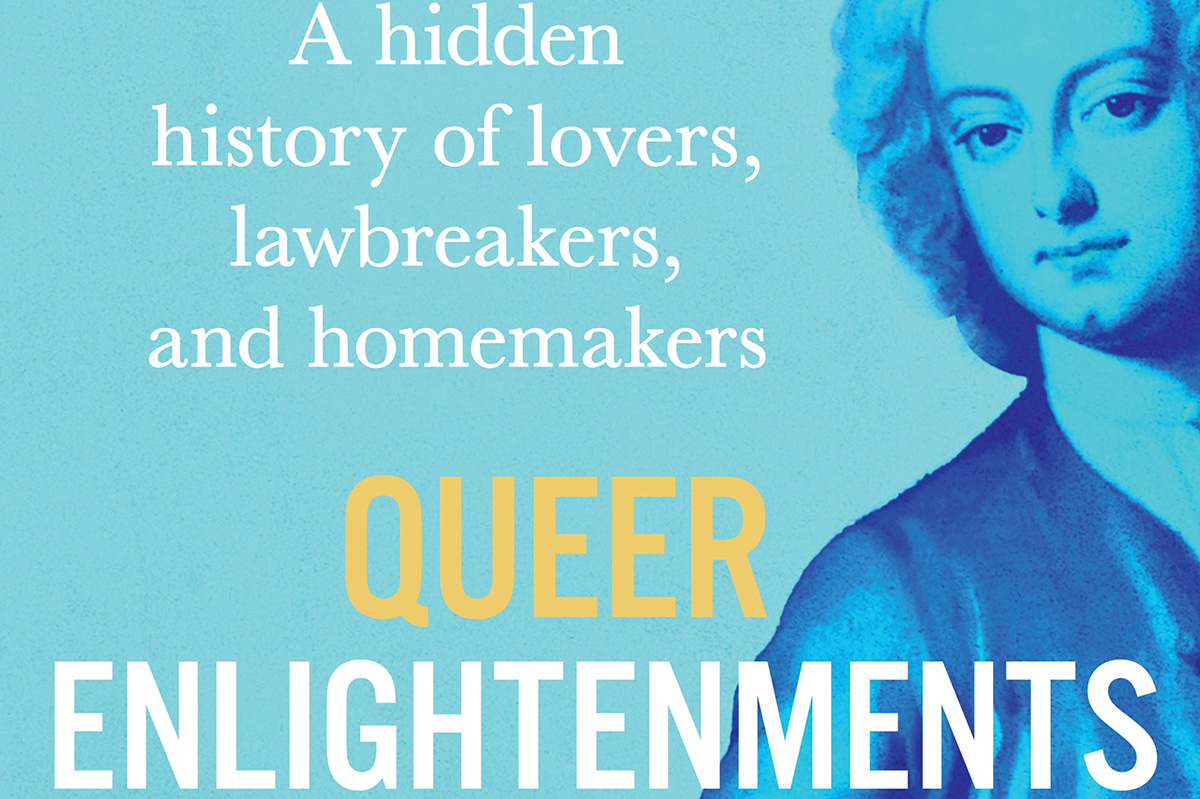
‘Queer Enlightenments: A Hidden History of Lovers, Lawbreakers, and Homemakers’
By Anthony Delaney
c.2025, Atlantic Monthly Press
$30/352 pages
It had to start somewhere.
The discrimination, the persecution, the inequality, it had a launching point. Can you put your finger on that date? Was it DADT, the 1950s scare, the Kinsey report? Certainly not Stonewall, or the Marriage Act, so where did it come from? In “Queer Enlightenments: A Hidden History of Lovers, Lawbreakers, and Homemakers” by Anthony Delaney, the story of queer oppression goes back so much farther.

The first recorded instance of the word “homosexual” arrived loudly in the spring of 1868: Hungarian journalist Károly Mária Kerthbeny wrote a letter to German activist Karl Heinrich Ulrichs referring to “same-sex-attracted men” with that new term. Many people believe that this was the “invention” of homosexuality, but Delaney begs to differ.
“Queer histories run much deeper than this…” he says.
Take, for instance, the delightfully named Mrs. Clap, who ran a “House” in London in which men often met other men for “marriage.” On a February night in 1726, Mrs. Clap’s House was raided and 40 men were taken to jail, where they were put in filthy, dank confines until the courts could get to them. One of the men was ultimately hanged for the crime of sodomy. Mrs. Clap was pilloried, and then disappeared from history.
William Pulteney had a duel with John, Lord Hervey, over insults flung at the latter man. The truth: Hervey was, in fact, openly a “sodomite.” He and his companion, Ste Fox had even set up a home together.
Adopting your lover was common in 18th century London, in order to make him a legal heir. In about 1769, rumors spread that the lovely female spy, the Chevalier d’Éon, was actually Charles d’Éon de Beaumont, a man who had been dressing in feminine attire for much longer than his espionage career. Anne Lister’s masculine demeanor often left her an “outcast.” And as George Wilson brought his bride to North American in 1821, he confessed to loving men, thus becoming North America’s first official “female husband.”
Sometimes, history can be quite dry. So can author Anthony Delaney’s wit. Together, though, they work well inside “Queer Enlightenments.”
Undoubtedly, you well know that inequality and persecution aren’t new things – which Delaney underscores here – and queer ancestors faced them head-on, just as people do today. The twist, in this often-chilling narrative, is that punishments levied on 18th- and 19th-century queer folk was harsher and Delaney doesn’t soften those accounts for readers. Read this book, and you’re platform-side at a hanging, in jail with an ally, at a duel with a complicated basis, embedded in a King’s court, and on a ship with a man whose new wife generously ignored his secret. Most of these tales are set in Great Britain and Europe, but North America features some, and Delaney wraps up thing nicely for today’s relevance.
While there’s some amusing side-eyeing in this book, “Queer Enlightenments” is a bit on the heavy side, so give yourself time with it. Pick it up, though, and you’ll love it til the end.
The Blade may receive commissions from qualifying purchases made via this post.
Books
A history of lesbian workarounds to build family
Fighting for the right to have and raise kids
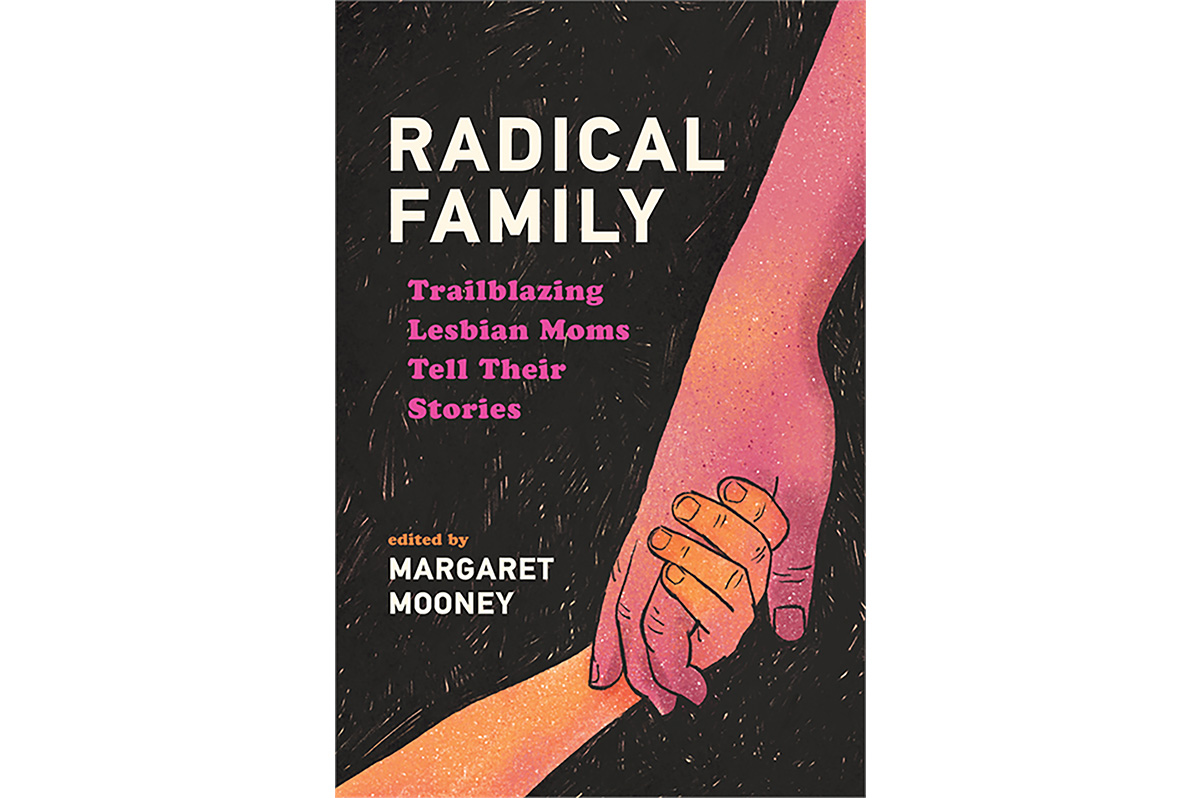
‘Radical Family: Trailblazing Lesbian Moms Tell Their Stories’
Edited by Margaret Mooney
c.2025, Wisconsin Historical Society Press
$20/150 pages
You don’t have a white picket fence with an adorable gate.
The other parts of the American Dream – the house in the suburbs, a minivan, and a big backyard – may also be beyond your reach. You’ve never wanted the joyous husband-wife union, but the two-point-five kids? Yeah, maybe that’s possible. As in the new book “Radical Family,” edited by Margaret Mooney, it’s surely more so than it was in the past.

Once upon a time, if a lesbian wanted to raise a family, she had two basic options: pregnancy or adoption. That is, says Mooney, if she was willing to buck a hetero-centric society that said the former was “selfish, unnatural and radical” and the latter was often just simply not possible or even legal.
Undaunted, and very much wanting kids, many lesbians ignored the rules. They built “chains” of women who handed off sperm from donor to doctor to potential mother. They demanded that fertility clinics allow single women as customers. They wrote pamphlets and publications aimed to help others become pregnant by themselves or with partners. They carefully sought lesbian-friendly obstetricians and nurses.
Over time, lesbians who wanted kids were “emboldened by the feminist movement and the gay and lesbian rights movement” and did what they had to do, omitted facts when needed, traveled abroad when they could, and found workarounds to build a family.
This book tells nine stories of everyday lesbians who succeeded.
Denise Matyka and Margaret McMurray went to Russia to adopt. Martha Dixon Popp and Alix Olson raised their family, in part and for awhile in conjunction with Popp’s husband. Gail Hirn learned from an agriculture publication how to inseminate herself. MC Reisdorf literally stood on her head to get pregnant. Mooney says that, like most lesbian parents then, she became a mother “without any safety nets…”
Such “struggles likely will feel familiar as you read about [the] desire to become parents…” says Mooney. “In short, these families are ordinary and extraordinary all at once.”
In her introduction, editor Margaret Mooney points out that the stories in this book generally take place in the latter part of the last century, but that their relevance is in the struggles that could happen tomorrow. There’s urgency in those words, absolutely, and they’re tinged with fear, but don’t let them keep you from “Radical Family.”
What you’ll see inside these nine tales is mostly happy, mostly triumphant – and mostly Wisconsin-centric, though the variety in dream-fulfillment is wide enough that the book is appropriate anywhere. The determination leaps out of the pages here, and the storytellers don’t hide their struggles, not with former partners, bureaucracy, or with roadblocks. Reading this book is like attending a conference and hearing attendees tell their tales. Bonus: photos and advice for any lesbian thinking of parenthood, single or partnered.
If you’re in search of positive stories from lesbian mothers and the wall-busting they did, or if you’ve lived the same tales, this slim book is a joy to read. For you, “Radical Family” may open some gates.
The Blade may receive commissions from qualifying purchases made via this post.
Books
Florida’s war on Black, queer lives hidden no more
New book ‘American Scare’ exposes truth of decades of erasure, attacks
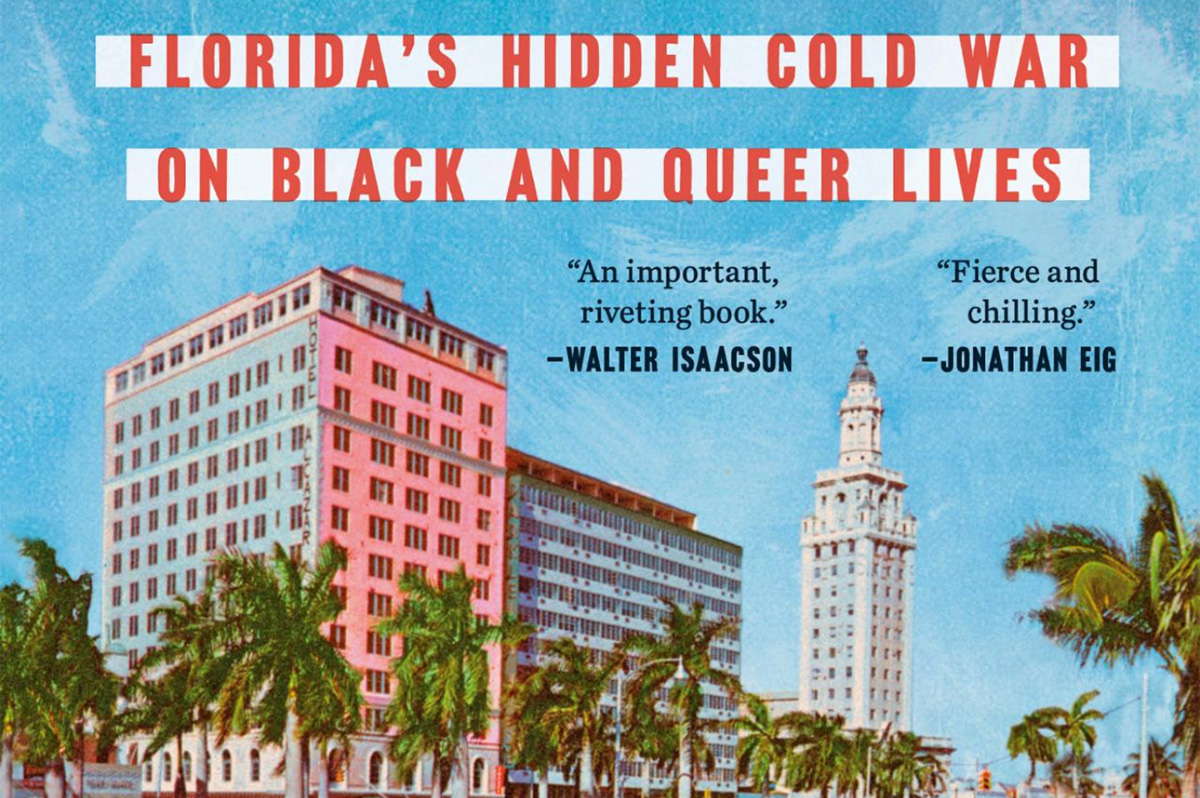
‘American Scare: Florida’s Hidden Cold War on Black and Queer Lives’
By Robert W. Fieseler
“What’s with Florida?,” Bobby Fieseler, disgusted, asked after completing his initial research into the vicious investigation of suspected homosexual teachers by the Florida Legislative Investigation Committee (FLIC) in the 1950s. How did the official animus toward all things queer happen in Florida, Fieseler pitched his publisher. We can be grateful Dutton gave him the green light for “American Scare, Florida’s Hidden Cold War on Black and Queer Lives.”

Fieseler’s book is a masterpiece of archive activism that begins in a rental van escaping Florida with some 20 boxes of historical documents meant to be seen by no one. The cartons contained a secret second copy of materials that had been held back from the jaws of the Florida State Archives in Tallahassee. Soon, more folders would surface with unredacted materials. “There are friends of Dorothy in any system,” he explains his archival detective work with a wink.
What’s with Florida? In the 1950s, it was all about legislators exposing politically helpless homosexuals to justify the committee’s investigations and budgets. The FLIC documents reveal the names of the accused “perverts,” the cops who raided the restrooms, the terrified queer informants and the professional interview techniques that would extract confessions from the victims. On another level, this was about old-school Southern racists determined to stop integration at all costs with intention to weave lies about Communist infiltration of the NAACP. Finally, Fieseler encountered first-hand an official determination to erase and lock-up this history. The statewide obsession with erasing history continues to this day. The Florida Department of Transportation this year painted over the community rainbow crosswalk memorial to the Pulse nightclub massacre victims in Orlando.
“American Scare” is such a fully documented investigation of what unfolded, it will be impossible to paint over the magnitude of this assault. The book bears witness in gory detail to the ruination of private people that exceeds in pure perniciousness the more famous “Lavender Scare.” Although the “Lavender Scare” purged many more individuals, it was about the U.S. Department of State firing public officials slimed as “pinstripe twerps.” The Florida investigations were a statewide purge using a dark politics of exposure of schoolteachers leading private lives. Fieseler quotes Remus Strickland, the head homo-hunter and executive director of the Southern Association of Intelligence Agents formed in response to the Supreme Court’s Brown v. Board of Education desegregation decision (1954), “If the Committee’s first pursuit (race and Communism) was a mandate, its second pursuit (homosexuals) was an opportunity.” Remus (that’s really this Southerner’s name) explained years later without remorse, “We first looked at the University of Florida for Communists….then we came back and did the homosexual purge.” Fieseler’s archival research reveals how far-right politicians and investigators like Strickland characterized Communists, African Americans (through the NAACP) and homosexuals as aligned “treasonously in a subversive societal infestation.”
The whole show was the creation of a wily, populist politician — a Florida “Pork Chopper” — Charley Johns, president of the Florida Senate. “Pork Choppers,” the rural, white Northern Florida wing of the old Democratic Party, controlled the state legislature from the 1930s to the 1960s. They were strongly opposed to integration, Communists, homosexuals, reapportionment and government reform. Johns owned the Charley E. Johns Insurance Agency, which insured state agencies. Fieseler’s history brings these North Florida politicians into grotesque focus. Their “power had lynched history,” he writes about his passion to excavate how they sealed and redacted the records so they would never face responsibility for their actions.
“American Scare” reveals how these Pork Choppers were willing to crush homosexuals as an instrument to maintain power. Their victims were isolated gay and lesbian teachers who could only plead for mercy, vanish or inform on one another. They were entrapped by the system itself. Fieseler tells the story of how Remus Strickland pulled Miss Poston, a physical education teacher out of her classroom surprising her with a tape recorder and a request to give a misdirecting statement about the prevention of child molestation. Suddenly Remus changed the subject: “Miss Poston, in your acts with Miss Bradshaw whom you referred to on this record, would she play the part of the aggressor…..She was known as the butch is that true?….Was there any occasion of any oral copulation?” He closed in for the kill, “Could there have been more than one time”? Miss Poston caved, “Possibly but if so only one more time.” The reel-to-reel tape is turning.
Concert pianist and music teacher William James Neal received the same taped grilling. Remus begins the interview, “You’re an educated Nigra,” confronting Neal with testimony he was a homosexual “nigra.” Years later, Neal remembered, “He told me I would never teach within the continental limits of the United States. He said he had proof I was a homosexual.” An African-American concert pianist, Neal had extensively toured the U.S. playing with major orchestras and hosting his own radio program in Florida. Neal had the self-respect and courage to take his illegal termination to the Florida Supreme Court. In 1962, the court ruled in his favor (Neal v. Bryant) handing Remus Strickland a devastating defeat, writing “The statements accused teachers allegedly made were obviously extracted under a threat of publicity.” Vindicated, William Neal nonetheless left Florida never to return.
There have been resolutions for an acknowledgment and apology. None have advanced through the Republican-controlled legislature occupied with a slew of “Don’t Say Gay” bills. “American Scare’ is larger than a small-bore history of investigations. It is the story of a Great Florida Teacher’s Purge launched to stop integration. Fieseler is done with redactions. He names names. If there is anything redemptive in this Southern hot mess, it is this: Bobby Fieseler, a queer historian, rescued the boxes and delivers readers their contents with history’s gale force.
The Blade may receive commissions from qualifying purchases made via this post.

